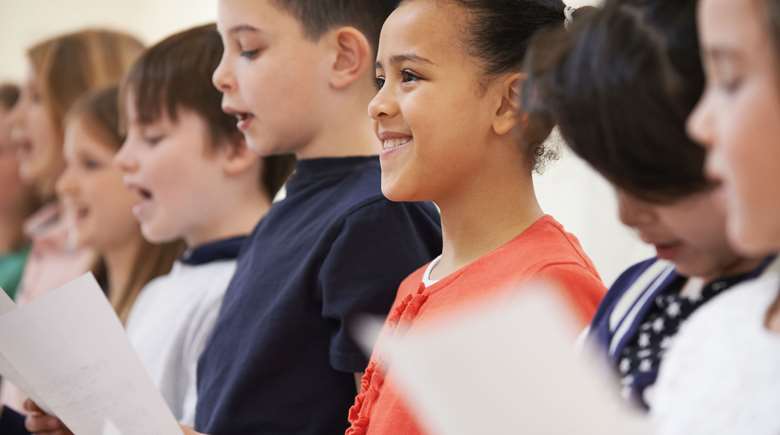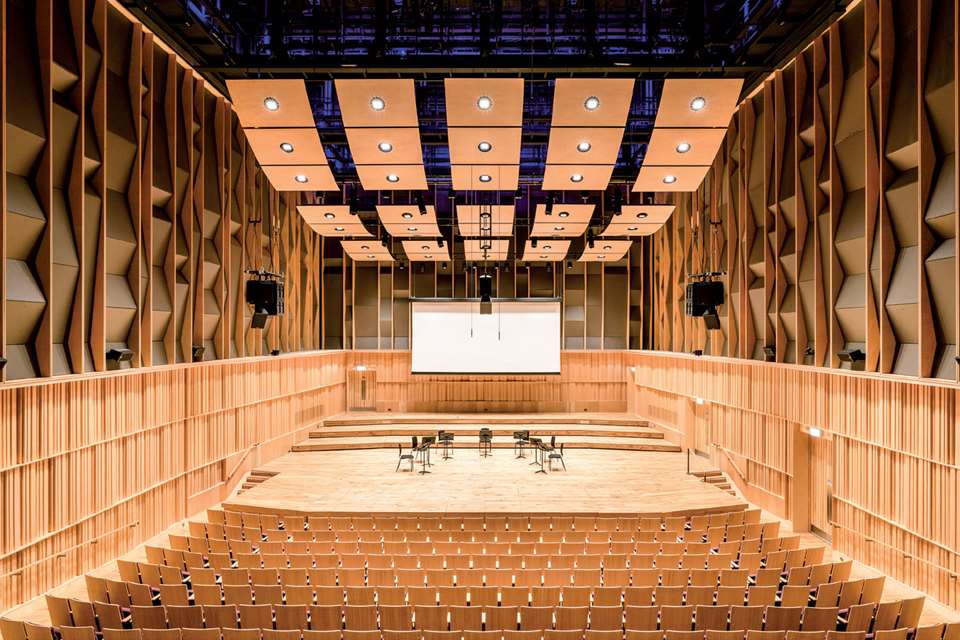Reviews: ABCD's Leading Singing in Primary Schools CPD
Sara-Lois Cunningham
Thursday, June 1, 2023
Sara-Lois Cunningham reviews a new course for leading singing in primary schools from ABCD.

Adobe Stock / Highway Starz
To be a great singing leader, you don’t have to be the world’s greatest singer.’ So says tenor and conductor Charles MacDougall. But it is helpful, he goes on to say, to have knowledge of how your own voice works, and of what sensations to expect, ‘being aware of what you might hear and feel when singing’.
This is just one of many highly pertinent and motivating insights from the first video of six from ABCD’s fabulous online resource ‘Leading Singing in Primary Schools’.
Course aims
‘This new course is designed to develop confidence, knowledge and skills for all teachers who lead young singers in primary schools, whether in a choir, classroom or whole school, whatever their experience level’, says general secretary of ABCD, Rachel Greaves. ‘It took the form of an online twilight course of six sessions. Participants could attend either the webinar live or watch the recordings at their convenience. The format proved a great success and so we have made all the recorded sessions available for people to buy.’
Training manager for ABCD, Elisabeth Brierley, adds: ‘We were looking at how to learn from the way we’d been able to deliver online training during lockdown and whether there was a place for continuing with this as we moved forward and were able to host live events again. In discussion with our members and practitioners, we decided to trial an online course for teachers.’
UK and beyond
The series so far has reached 140–50 attendees, whether live or via the videos, with the majority being teachers or conductors of children’s and youth choirs. ‘Most bookings have been from the UK’, says Brierley, ‘but we’ve had a far greater geographical reach than we would have been able to achieve with a live course. We had bookings from teachers on the isles of Muck and Rum in Scotland, in Norwich, Penzance, Cardiff, Newcastle, York, London. There were bookings for the course from overseas, from teachers working in Spain, New Zealand, France, Italy and the Republic of Ireland.’
Emi Bels, a primary school teacher in Hull attended the series live. ‘The sessions are very useful on several levels’, she says. ‘ABCD chose a range of facilitators with a wealth of experience and ideas. Hearing from practitioners with many years in the field and being able to ask them questions was invaluable. It was also lovely to be able to talk with other singing leaders from across the country. It can be a somewhat isolated position within primary schools, and hearing from experts and colleagues is both reassuring and enlightening.’
The series
Vocal Discovery
The first of the videos, entitled ‘A Voyage of Vocal Discovery’, was presented by the abovementioned Charles MacDougall, who has worked with the Voices Foundation, Voces8, Gabrieli Consort, Junior Trinity and youth choirs, and in supporting those who lead singing elsewhere.
This is an excellent presentation and very much about the singing leader exploring their own voice before setting themselves in front of a choir. As MacDougall says, ‘If you have no desire to explore your own voice, how can you inspire others to have the confidence to explore theirs? If you have no idea of how your voice works, how can you begin to give meaningful support and coaching to those who don’t know how it works yet, either?’ He exhorts all to find a good singing teacher and to take individual lessons with them.
MacDougall has an engaging manner and gives sound advice on warm-ups and how to use the voice well. He employs the Accent Method breathing for singers, which was originally created in the field of speech therapy and has become the go-to technique for specialist singing teachers across the UK in recent years. Also evident were techniques that can be found in the book Singing and Teaching Singing, written by one of the most influential singing teachers of our times, Janice Chapman.
MacDougall covers exercises for calm and focus; finding the breath-sound connection through fricatives, primal sounds and emotional connection; warming up the voice; resonance; and exercises for the tongue for efficient articulation. He concludes by outlining takeaway points and encouraging choral leaders to take ownership of their instruments and to ‘remember the joy it brings for us to sing together’.
Musical Leader
Conductor, choral specialist and teacher Amy Bebbington presents ‘The Teacher as Musical Leader’. She offers a set of warm-ups, interactive activities, tips on teaching by ear, and call and response, all to get children singing healthily and well with joy. There are physical energising exercises, which lay the foundations for future note-reading, and Bebbington advocates using visual images to tap into the children’s imaginations: for instance, blowing up a beach ball for breath and physical connection.
Bebbington shows the Kodály solfège hand signs and suggests that even sprinklings of this will really help children with aural acuity and pitch memory. She talks of using flashcards to give instructions, and coloured beanbags to achieve a sense of pulse (Dalcroze). She also demonstrates basic conducting skills, explaining that there are different approaches: ‘We don’t always have to use beat patterns – they are not inspiring’.
‘We can show choreography, rhythm or different forms of gesture. To make sound happen we need eyes, breath, gesture, intention and trust. Children need to see your face, eyes and sense your breath. It’s very important to tease out their imagination, to think about the text and have fun with what you are creating. If it works with just kinaesthetic gesture, then keep doing that.’
Vocal health
Another session is led by Suzzie Vango, who is vocal coach for the CBSO Youth Chorus, vocal tutor for Ex Cathedra’s education department and is a conductor for the National Children’s Choir (NCC). Vango stresses the importance of vocal health for young children, providing warm-up songs and exercises and urging teachers to introduce voice play to enable the children to find different ways of using their voice.
Repertoire
Tom Leech, director of the Schools Singing Programme in the diocese of Leeds, and Shivani Rattan, freelance conductor and choir leader for Brent Music Service, focus on repertoire ideas for the primary school. Leech says the priority is ‘engaging children, making them want to sing: the quality comes after that engagement’. Rattan believes that, with work on vocal technique, a high quality of music-making is achievable with any kind of singer, no matter their experience level.
Singing the curriculum
Dr Rebecca Berkley, assistant professor of music education at the University of Reading, looks at teaching aspects of the curriculum through singing. It was this presentation that Bels found most useful as a primary school teacher: ‘This session was perhaps the most eye-opening. It gave me something to aim for in terms of teacher confidence and of singing being a core part of music teaching throughout the school, rather than being reserved for singing assemblies and after-school choir. While my school has a way to go before this can happen, I now have a clearer vision of how singing can be the vessel through which the music curriculum is delivered, as opposed to a bolt-on activity reserved for specialists.’
Ensemble work
The last instalment of the series is on developing two-part and ensemble singing, with Jo McNally and Richard Jeffries. Bels says: ‘As a relatively new director having started a choir this academic year, this session was invaluably useful. My nascent school choir is reaching the point where the children may be ready for two-part singing, and the suggested repertoire and approaches have informed my choice for this term’s planning.’
Looking ahead
ABCD is now planning a secondary school series to be released in the autumn, exploring voice change for boys and for girls, conducting and musical leadership skills, ideas for engaging teenagers in singing, repertoire selection, how to use singing as a transition tool from Year 6 to secondary school, and how to develop a whole-school singing culture.
‘The flexible nature and affordability of the series make it much easier than most intensive in-person CPD,’ says Bels. ‘The fact that the sessions are available as recordings is also hugely appreciated. I would urge anyone leading singing or music in primary schools to engage with any future specialist ABCD training.’
Videos available from the ABCD primary schools series:
- A Voyage of Vocal Discovery (Charles McDougall)
- Vocal Health and Engaging Vocal Warm-ups (Suzzie Vango)
- Repertoire Ideas (Tom Leech and Shivani Rattan)
- The Teacher as Musical Leader (Amy Bebbington)
- Singing as a Tool to Deliver Curriculum (Rebecca Berkley)
- Develop Two-part and Ensemble Singing (Jo McNally and Richard Jeffries)
Cost: £15/£10 per session (non-members/members)Complete course: £75/£50 (non-members/members)



